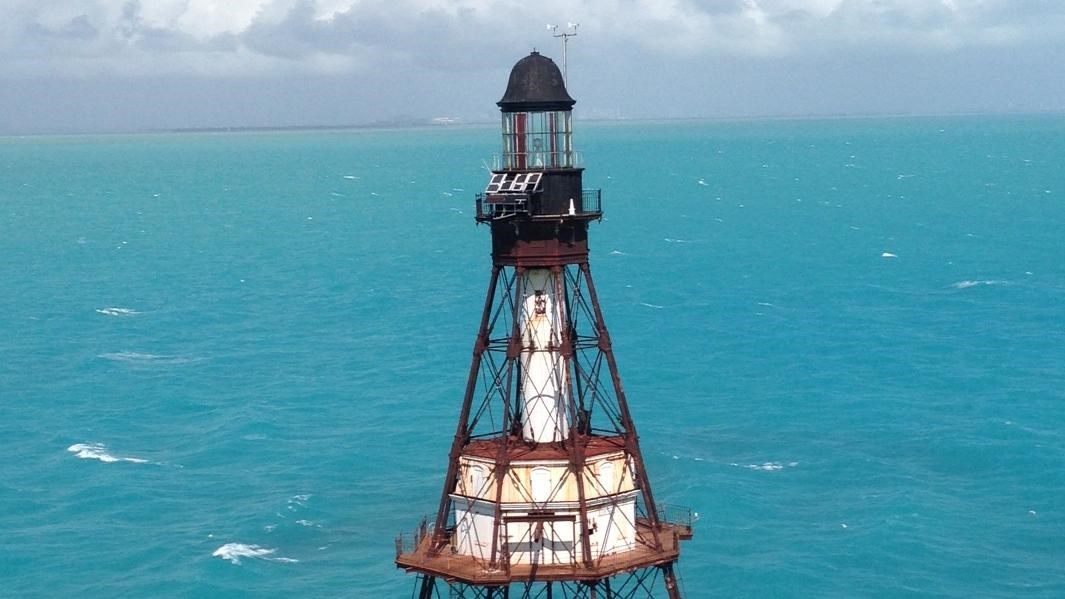Last updated: April 14, 2021
Place
Fowey Rocks Lighthouse

Photo by Heriberto Irizarry
The Cape Florida light at the southern tip of Key Biscayne was built in 1825. Fifty years later, the light served little purpose and was extinguished. Ships did not need to be warned of the island, but rather of the knife-edged reef that lay 5 miles offshore. Iron-pile lighthouses further south in the Keys had been quite successful at marking the reef, so the Light House Board contracted to have one built at Fowey Rocks, southeast of Cape Florida.
Construction began in 1875 when a staging platform was built at the site. Materials were initially delivered to Soldier Key, then ferried out to the site as needed. Severe weather hampered the construction of the light for many months. Workers frequently stayed in tents on the staging platform in order to avoid wasted travel time. Twice during construction, workers became keenly aware of how important the light would be when ships headed straight for their camping platform suddenly ground to a halt on the nearby reef! Arratoon Apcar was one of these ships, and it too is now part of the Biscayne National Park Maritime Heritage Trail.
The most time-consuming part of the construction was building the foundation and lower decks. Due to the aforementioned weather delays, this part of the process took over a year. The keeper's dwelling itself is a two-story octagonal building in the Second Empire style. It was painted white with green shutters. Rising from the center of the house is a 50' tall enclosed spiral stairwell leading up to the service room, the watch room and the lantern room. The tower is capped with a copper roof and ventilator ball.
Fowey Rocks Lighthouse is within sight of both the park's northern islands and Cape Florida. The original Fresnel lens is now on display at the U.S. Coast Guard's National Aids to Navigation Training Center in Yorktown, Virginia, and it has been replaced with a modern solar-powered light visible some 17 miles out to sea. Though now part of Biscayne National Park, the light itself is still maintained by the U.S. Coast Guard as the "Eye of Miami."
